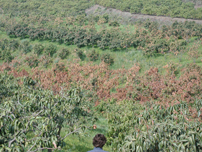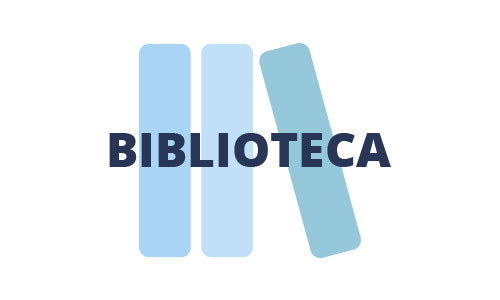Enfermedades de plantas y frutos tropicales
 ENFERMEDADES DE PLANTAS Y FRUTOS TROPICALES
ENFERMEDADES DE PLANTAS Y FRUTOS TROPICALES
Los cultivos de mango y aguacate son uno de los cultivos subtropicales más extendidos y asentados en Andalucía. Nuestro grupo viene trabajando ya desde 1992 en los problemas fitosanitarios más importantes en Andalucía del cultivo del mango (la necrosis apical y la malformación) y del aguacate (podredumbres radiculares, muerte regresiva de ramas y enfermedades postcosecha), mediante un estudio integral que persigue fundamentalmente aportar soluciones prácticas para el control y la prevención de dichas patologías, que sean potencialmente transferibles a los sectores productivos directamente implicados, como son productores y viveristas.
Además, se pretende avanzar en el conocimiento de aspectos básicos de la biología de patógenos como Pseudomonas syringae pv. syringae, agente causal de la necrosis apical, especies del complejo Fusarium, causantes de la malformación del mango, patógenos del aguacate de suelo (por ejemplo, Rosellinia necatrix) y de la parte aérea (hongos del complejo Botryosphaeria), así como patógenos implicados en problemas de postcosecha en mango y aguacate. Estos estudios permiten obtener información relevante para el desarrollo de programas de control de la enfermedad más racionales y compatibles con el medio ambiente. Por tanto, pretendemos combinar la investigación de aspectos básicos para mejorar el conocimiento científico y técnico de estas patologías del mango, con la innovación y el desarrollo de aspectos aplicados directamente transferibles al sector, para mejorar y consolidar este cultivo en el litoral andaluz.
Actualmente, se investiga activamente en:
1. Avanzar en el conocimiento de la etiología, la epidemiología y el control de la necrosis apical del mango; y en el de la biología, ecología y virulencia de Pseudomonas syringae pv. syringae incluyendo el empleo de aproximaciones genómicas y funcionales.
2. Profundizar en la etiología, la epidemiología y el control de la muerte regresiva de ramas de aguacate, causada por varias especies del complejo Botryosphaeria.
3. Identificar los principales problemas de patógenos postcosecha en mango y aguacate, y proponer métodos de control compatibles con el manejo del fruto.
En esta línea de investigación se han establecido y mantienen numerosas colaboraciones con importantes grupos de diferentes centros nacionales y extranjeros: Dres Rodríguez-Palenzuela y López-Solanilla del CBGP-UPM-INIA, Dr. Murillo de la Universidad Pública de Navarra, Dra. Barón de la E.E. del Zaidín-CSIC, Dres. Arnold y Jackson de las Universidades de West England y de Reading (Reino Unido), Dr. Sundin de la Michigan State University (EEUU), Dr. Raijmakers de la Universidad de Wageningen (Holanda), y Dr. Freeman del Volcani Center (Israel). Además de establecer acuerdos con empresas relevantes del sector del mango, como: SAT-2803-TROPS, Brokaw España S.L. y Reyes Gutiérrez S.L.
Investigador Responsable: ANTONIO DE VICENTE MORENO ResearcherID: G-4405-2011
Antonio de Vicente Moreno
Francisco Cazorla López
Dolores Fernández Ortuño
Eva Arrebola Díez
Sandra Tienda Serrano
Zaira Heredia Ponce
PUBLICACIONES
Cazorla, F.M.; L. Olalla; J.A. Torés, A. Pérez-García, J.C. Codina y A. de Vicente.
A method for estimation of population densities of ice nucleating active Pseudomonas syringae in buds and leaves of mango.
JOURNAL OF APPLIED BACTERIOLOGY, 79: 341-346 (1995).
Indice de impacto: 1,660 (JCR, 1995). Ranking: 21 de 65 (Biotechnology & Applied Microbiology-Q2).
Cazorla, F.M.; J.A. Torés; L. Olalla; A. Pérez-García; J.M. Farré y A. de Vicente.
Bacterial apical necrosis of mango in southern Spain: A disease caused by Pseudomonas syringae pv. syringae.
PHYTOPATHOLOGY, 88: 614-620 (1998).
Indice de impacto: 2,390 (JCR, 1998). Ranking: 14 de 141 (Plant Sciences-Q1).
Cazorla, F.M.; E. Arrebola; A. Sesma; A. Pérez-García; J.C. Codina; J. Murillo y A. de Vicente.
Copper resistance in Pseudomonas syringae strains isolated from mango is encoded mainly by plasmids.
PHYTOPATHOLOGY, 92: 909-916 (2002).
Indice de impacto: 2,220 (JCR, 2002). Ranking: 20 de 135 (Plant Sciences-Q1).
Arrebola, E., F.M. Cazorla, V.E. Durán, M.E. Rivera, F. Olea, J.C. Codina, A. Pérez-García y A. de Vicente.
Mangotoxin: A novel antimetabolite toxin produced by Pseudomonas syringae inhibiting ornithine/arginine biosynthesis.
PHYSIOLOGICAL AND MOLECULAR PLANT PATHOLOGY, 63: 117-127 (2003).
Indice de impacto: 1,262 (JCR, 2003). Ranking: 49 de 136 (Plant Sciences-Q2).
Cazorla, F.M.; E. Arrebola; F. Olea; L. Velasco; J.M. Hermoso, A. Pérez-García, J.A. Torés, J.M. Farré y A. de Vicente.
Field evaluation of treatments for the control of the bacterial apical necrosis of mango (Mangifera indica) caused by Pseudomonas syringae pv. syringae.
EUROPEAN JOURNAL OF PLANT PATHOLOGY, 116: 279-288 (2006).
Indice de impacto: 1,217 (JCR, 2006). Ranking: 5 de 21 (Horticulture-Q1).
Kennelly, M.M., F.M. Cazorla, A. de Vicente, C. Ramos y G.W. Sundin.
Pseudomonas syringae diseases of fruit trees. Progress toward understanding and control.
PLANT DISEASE, 91: 4-17 (2007).
Indice de impacto: 1,790 (JCR, 2007). Ranking: 48 de 152 (Plant Sciences-Q2).
Arrebola, E., F.M. Cazorla, D. Romero, A. Pérez-García y A. de Vicente.
A nonribosomal peptide synthetase gene (mgoA) of Pseudomonas syringae pv. syringae is involved in mangotoxin biosynthesis and is required for full virulence.
MOLECULAR PLANT-MICROBE INTERACTIONS, 20: 500-509 (2007).
Indice de impacto: 4,275 (JCR, 2007). Ranking: 18 de 138 (Biotechnology & Applied Microbiology-Q1).
Cazorla, F.M.; J.C. Codina; C. Abad; E. Arrebola; J.A. Torés; J. Murillo; A. Pérez-García y A. de Vicente.
62-kb plasmids harboring rulAB homologues confer UV-tolerance and epiphytic fitness to Pseudomonas syringae pv. syringae mango isolates.
MICROBIAL ECOLOGY, 56: 283-291 (2008).
Indice de impacto: 2,885 (JCR, 2008). Ranking: 27 de 91 (Microbiology-Q2).
Arrebola, E., F.M. Cazorla, J.C. Codina, J. Gutiérrez-Barranquero, A. Pérez-García y A. de Vicente.
Contribution of mangotoxin to the virulence and epiphytic fitness of Pseudomonas syringae pv. syringae.
INTERNATIONAL MICROBIOLOGY, 12: 87-95 (2009).
Indice de impacto: 1,800 (JCR, 2009). Ranking: 82 de 152 (Biotechnology & Applied Microbiology-Q3).
Gutiérrez-Barranquero J.A., E. Arrebola, N. Bonilla, D. Sarmiento, F.M. Cazorla y A. de Vicente.
Environmentally friendly treatment alternatives to Bordeaux mixture for controlling bacterial apical necrosis (BAN) of mango.
PLANT PATHOLOGY, 61: 665-676 (2012)
Indice de impacto: 2,729 (JCR, 2012). Ranking: 8 de 78 (Agronomy-Q1).
Crespo M., F.M. Cazorla, J.M. Hermoso, E. Guirado, M. Maymon, J.A. Torés, S. Freeman y A. de Vicente.
First report of mango malformation disease caused by Fusarium mangiferae in Spain.
PLANT DISEASE, 96: 286 (2012)
Indice de impacto: 2,455 (JCR, 2012). Ranking: 53 de 195 (Plant Sciences-Q2).
Arrebola E.,V.J. Carrión, F.M. Cazorla, A. Pérez-García, J. Murillo y A. de Vicente.
Characterization of the mgo operon in Pseudomonas syringae pv. syringae UMAF0158 that is required for mangotoxin production.
BMC MICROBIOLOGY, 12: 10 (2012)
Indice de impacto: 3,104 (JCR, 2012). Ranking: 41 de 116 (Microbiology-Q2).
Carrión, V.J., E. Arrebola, F.M. Cazorla, J. Murillo y A. de Vicente.
The mbo operon is specific and essential for biosynthesis of mangotoxin in Pseudomonas syringae.
PLOS ONE, 7 (5): e36709 (2012)
Indice de impacto: 3,730 (JCR, 2012). Ranking: 7 de 56 (Multidisciplinary Sciences-Q1).
Carrión, V.J., J.A. Gutiérrez-Barranquero, E. Arrebola, L. Bardají, Juan C. Codina, A. de Vicente, F.M. Cazorla y J. Murillo.
The mangotoxin biosynthetic operon mbo is specifically distributed within Pseudomonas syringae genomospecies 1 and has been acquired only once during evolution.
APPLIED AND ENVIRONMENTAL MICROBIOLOGY, 79 (3): 756-767 (2013)
Indice de impacto: 3,952 (JCR, 2013). Ranking: 30 de 165 (Biotechnology & Applied Microbiology-Q1).
Gutiérrez-Barranquero J.A., A. de Vicente, V.J. Carrión, G.W. Sundin y F.M. Cazorla.
Recruitment and rearrangement of three different genetic determinants into a conjugative plasmid increase copper resistance in Pseudomonas syringae.
APPLIED AND ENVIRONMENTAL MICROBIOLOGY, 79 (3): 1028-1033 (2013)
Indice de impacto: 3,952 (JCR, 2013). Ranking: 30 de 165 (Biotechnology & Applied Microbiology-Q1).
Gutiérrez-Barranquero J.A. , V.J. Carrión, J. Murillo, E. Arrebola, D.L. Arnold, F.M. Cazorla y A. de Vicente.
A Pseudomonas syringae diversity survey reveals a differentiated phylotype of the pathovar syringae associated with the mango host and mangotoxin production.
PHYTOPATHOLOGY 103: 1115-1129 (2013).
Indice de impacto: 2,746 (JCR, 2013). Ranking: 44 de 199 (Plant Sciences-Q1).
Carrión, V.J., M. van der Voort, E. Arrebola, J.A. Gutiérrez-Barranquero, A. de Vicente, J.M. Raaijmakers y F.M. Cazorla.
Mangotoxin production of Pseudomonas syringae pv. syringae is regulated by MgoA.
BMC MICROBIOLOGY, 14: 46 (2014).
Indice de impacto: 2,729 (JCR, 2014). Ranking: 51 de 119 (Microbiology-Q2).
Crespo M., E. Arrebola, F.M. Cazorla, M. Maymon, S. Freeman, J.A. Torés y A. de Vicente.
Characterization of Fusarium mangiferae isolates from mango malformation disease in Southern Spain.
EUROPEAN JOURNAL OF PLANT PATHOLOGY, 139: 247-253 (2014).
Indice de impacto: 1,490 (JCR, 2014). Ranking: 6 de 33 (Horticulture-Q1).
PUBLICACIONES (últimos 5 años, desde 2015)
Martínez-García, P.M., P. Rodríguez-Palenzuela, E. Arrebola, V.J. Carrión, J.A. Gutiérrez-Barranquero, A. Pérez-García, C. Ramos, F.M. Cazorla y A. de Vicente. Bioinformatics analysis of the complete genome sequence of the mango tree pathogen Pseudomonas syringae pv. syringae UMAF0158 reveals traits relevant to virulence and epiphytic lifestyle. PLoS ONE 10(8):e0136101 (2015). DOI: 10.1371/journal.pone.013610.
Crespo, M., F.M. Cazorla, S. Freeman, J.A. Torés y A. de Vicente. Diagnosis and diversity of the Fusarium spp. isolates causing mango malformation in Southern Spain. IOBC/wprs Bulletin 110:117-118 (2015).
Arrebola, E., V.J. Carrión, J.A. Gutiérrez-Barranquero, A. Pérez-García, P. Rodríguez-Palenzuela, F.M. Cazorla y A. de Vicente. Cellulose production in Pseudomonas syringae pv. syringae: a compromise between epiphytic and pathogenic lifestyles. FEMS MICROBIOLOGY ECOLOGY 91:fiv071 (2015). DOI: 10.1093/femsec/fiv071.
Puig, M., C. Moragrega, L. Ruz, C.E. Calderón, F.M. Cazorla, E. Montesinos e I. Llorente. Interaction of antifungal peptide BP15 with Stemphylium vesicarium, the causal agent of brown spot of pear. FUNGAL BIOLOGY 120:61-71 (2016). DOI: 10.1016/j.funbio.2015.10.007.
Crespo, M., E. Arrebola, F.M. Cazorla, M. Maymon, S. Freeman, T. Aoki, K. O’Donell, J.A. Torés y A. de Vicente. Analysis of genetic diversity of Fusarium tupiense, the main causal agent of mango malformation disease in Southern Spain. PLANT DISEASE 100:276-286 (2016). DOI: 10.1094/PDIS-02-15-0153-RE.
Arrebola, E., F.M. Cazorla y A. de Vicente. 25 años de estudio de la necrosis apical del mango causada por Pseudomonas syringae pv. syringae. Boletin SEF 95:18-25 (2016).
Gutiérrez-Barranquero, J.A., F.M. Cazorla, E. Guirado, D. Sarmiento, J.A. Torés y A. de Vicente. Cómo manejar la necrosis apical y la marformación, las dos principales enfermedades que afectan al mango en España. PHYTOMA España, 287: 16-21 (2017).
Gutiérrez-Barranquero, J.A., F.M. Cazorla, A. de Vicente y G.W. Sundin. Complete sequence and comparative genomic analysis of eight native Pseudomonas syringae plasmids belonging to the pPT23A family. BMC GENOMICS, 18: 365 (2017). Doi: 10.1186/2864-017-3763-x.
Gutiérrez-Barranquero, J.A., F.M. Cazorla, J.A. Torés y A. de Vicente. Pantoea agglomerans as a new etiological agent of a bacterial necrotic disease of mango trees. PHYTOPATHOLOGY, 109: 17-26 (2019). Doi: 10.1094/PHYTO-06-18-0186-R.
de Vicente, A., A. Pérez-García y F.M. Cazorla. Capítulo 1. Bacterias fitopatógenas: introducción a su biología, ecología y taxonomía. En: ENFERMEDADES DE PLANTAS CAUSADAS POR BACTERIAS. M.M. López, J. Murillo, E. Montesinos y A. Palacio-Bielsa (eds.). SEF y Bubok Publishing S.L., Madrid 2019. pp 33-57 (ISBN: 978-84-685-3302-5)).
Cazorla, F.M., J. Murillo y A. de Vicente. Capítulo 15. Género Pseudomonas. En: ENFERMEDADES DE PLANTAS CAUSADAS POR BACTERIAS. M.M. López, J. Murillo, E. Montesinos y A. Palacio-Bielsa (eds.). SEF y Bubok Publishing S.L., Madrid 2019. pp 317-322 (ISBN: 978-84-685-3302-5)).
Gutierrez-Barranquero, J.A., F.M. Cazorla y A. de Vicente. Pseudomonas syringae pv. syringae associated with mango trees, a particular pathogen within the “hodgepodge” of the Pseudomonas syringae complex. FRONTIERS IN PLANT SCIENCE 10: 570. Doi: 10.3389/fpls.2019.00570 (2019).
Gutierrez-Barranquero, J.A., F.M. Cazorla, J.A. Torés y A. de Vicente. First report of Pantoea ananatis causing necrotic symptoms in mango trees in the Canary Islands, Spain. PLANT DISEASE 103: 1017. Doi: 10.1094/PDIS-10-18-1903-PDN (2019).
Heredia-Ponce, Zaira, J.A. Gutiérrez-Barranquero, G. Purtschert-Montenegro, L. Eberl, F.M. Cazorla y A. de Vicente. Biological role of EPS from Pseudomonas syringae pv. syringae UMAF0158 extracellular matrix, focusing on a Psl-like polysaccharide. BIOFILMS AND MICROBIOMES 6: 37 (2020). Doi: 10.1038/S41522-020-00148-6.
F. Aprile, Heredia-Ponce, Z., Cazorla, F.M., de Vicente, A. y Gutiérrez-Barranquero, J.A. A large Tn7-like transposon confers hyperresistance to copper in Pseudomonas syringae pv. syringae. APPLIED AND ENVIRONMENTAL MICROBIOLOGY 87:e02528-20, 19 pp. (2021). Doi:10.1128/AEM.02528-20.
Heredia-Ponce, Z., de Vicente, A., Cazorla, F.M., y Gutiérrez-Barranquero, J.A. Beyond the wall: exopolysaccharides in the biofilm lifestyle of pathogenic and beneficial plant-associated Pseudomonas. MICROORGANISMS 9:445, 17 pp. (2021). Doi: 10.3390/microorganisms9020445.
PROYECTOS ACTIVOS
Profundizando en la biología y el control de las dos enfermedades críticas del cultivo del mango en Andalucía.
Ent. Financiadora: Incentivos a Proyectos de Investigación de Excelencia. PAIDI- Consejería de Innovación, Ciencia y Empresa. Junta de Andalucía (P12-AGR-1473).
Ent. participantes: Universidad de Málaga y otras.
Duración: 2014-2018.
Investigador responsable: Dr. A. de Vicente.
Nº de investigadores participantes: 35
Microbiología y Patología Vegetal – Grupo AGR0169.
Ent. Financiadora: Incentivos para apoyar a Grupos de Investigación Andaluces. PAIDI-Junta de Andalucía.
Ent. participantes: Universidad de Málaga
Duración: 1993-2015.
Investigador responsable: Dr. A. de Vicente.
Nº de investigadores participantes: 15







